Changing Out A Microphone Tube With Photos |
|
|
|
|
|
|
Jun 26 2013, 01:26 AM
|
|
The following (Copyrighted) photos show how I changed out the Stock ECC83/12AT7 Tube of my sE Electronics Z5600A and replaced it with an early 1960’s “Made-In-England” Mullard ECC81/12AT7 Tube. (Informational Links at the bottom of page)
Changing a Tube in a Tube Microphone does not require high levels of technical or dexterity skills but it is best to do it in a clean and dust-free (as possible) environment making sure your hands are “squeaky clean” so as to not transfer oils from your skin to the glass tube surface. (I actually used a Nikon Camera-Lense Micro-Cloth to remove the stock tube and install the Mullard) The Photo below is the sE Electronics Z5600A 9-Pattern Tube Condensor Mic, the #1 favorite in my small collection of mics. 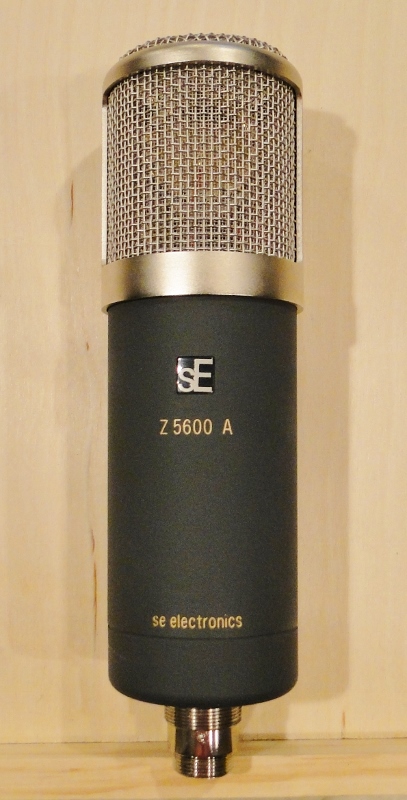 This next Photo shows the first part of disassembling the mic by unscrewing the bottom-cap. 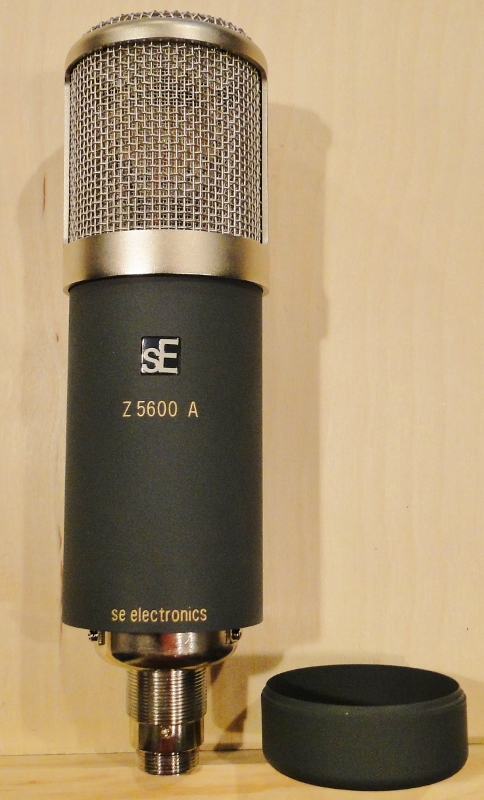 This Photo below shows the mic with its metallic body removed making the electronics on the front of the mic visible. 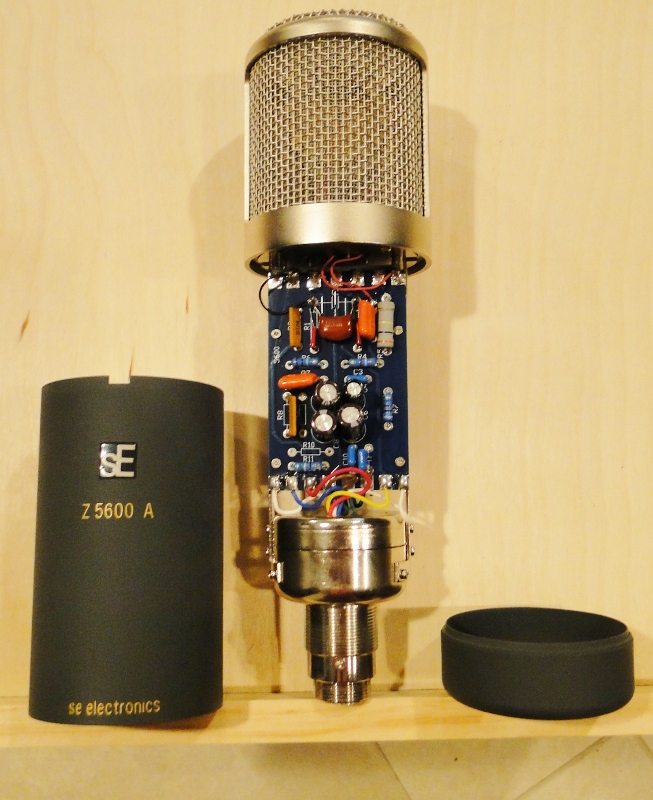 In this Photo below, the microphone is turned around so the back electronics are visible along with the mic’s stock tube that is inserted in the cream color ceramic socket below the tube. 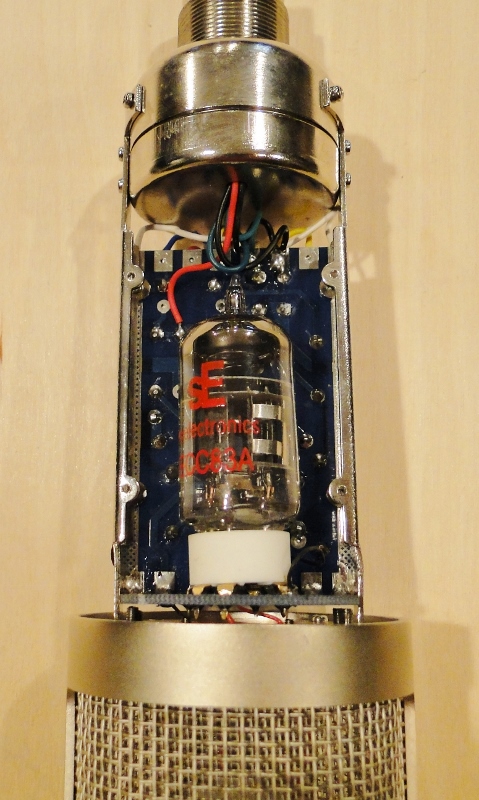 This Photo below shows the Stock ECC83 Tube removed after gently pulling it out of its ceramic socket. 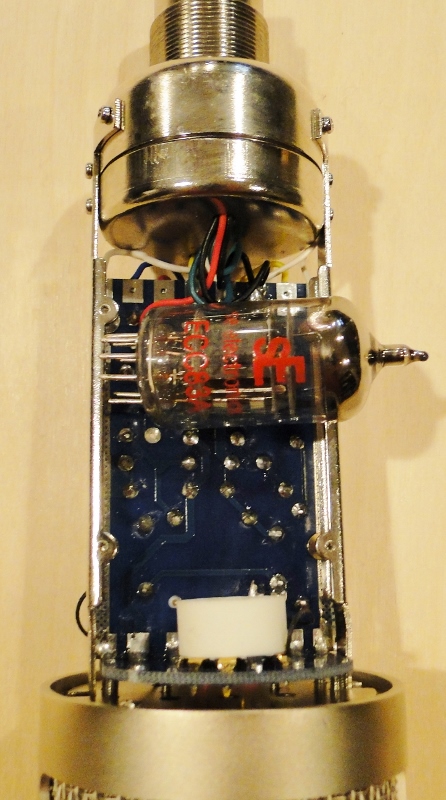 In this Photo below, you can see the Stock Tube next to the Mullard Tube. The metal pins at the bottom of the tube are inserted into a matched set of holes in the ceramic socket. 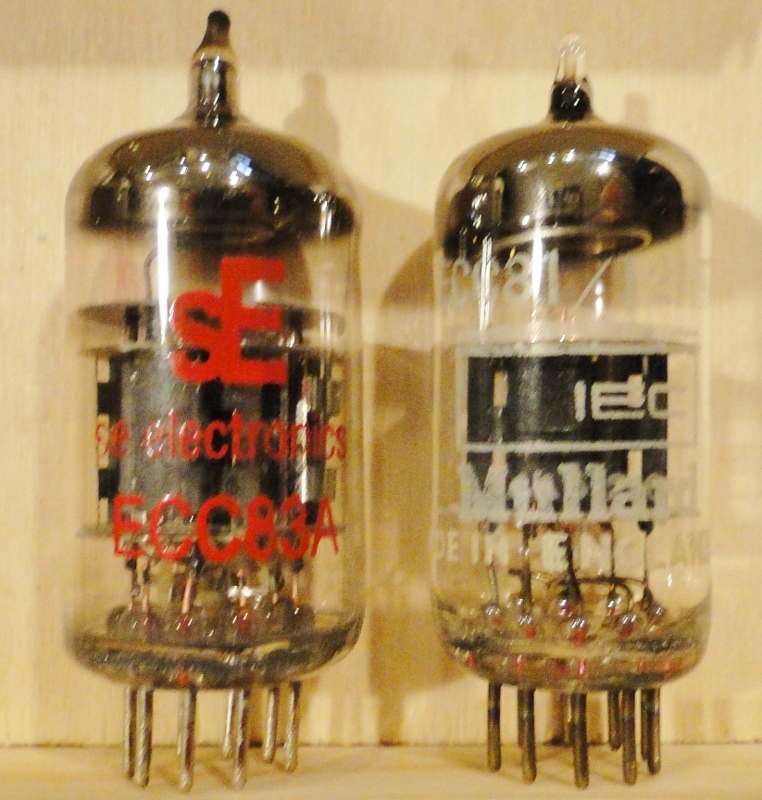 This Photo below shows the Mullard Tube in place and the metal housing partially installed. 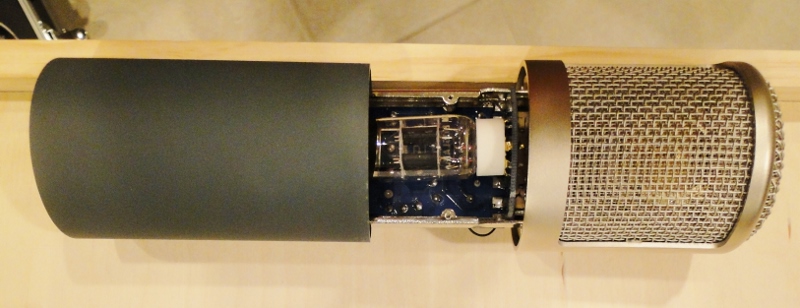 This photo below shows the microphone metal housing in place waiting for installation of the screw-on Bottom-Cap and the Photo below shows the mic completely re-assembled 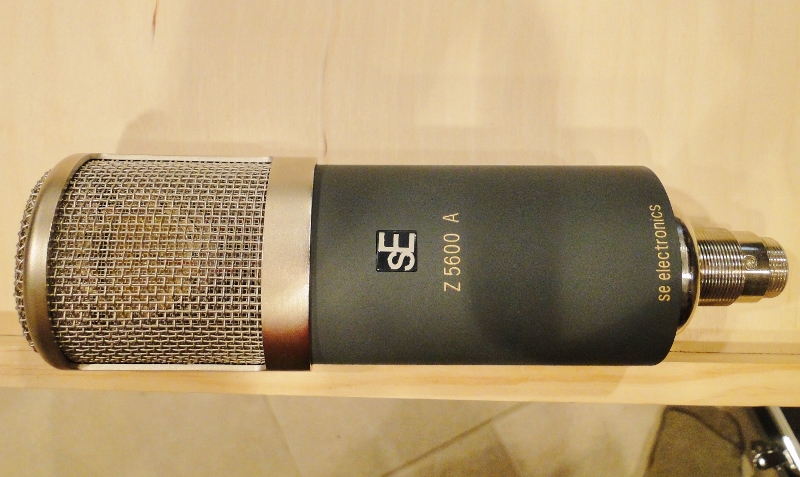 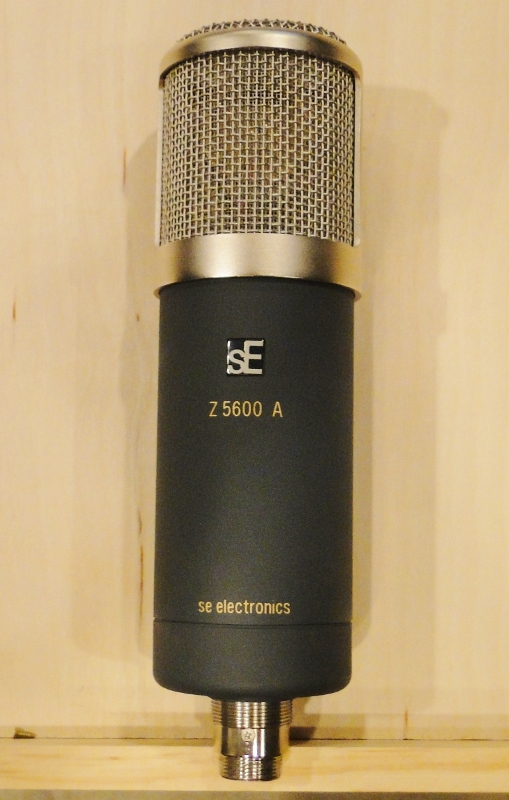 To learn a bit more about the types of Vacuum-Tubes used primarily in Audio, use these links: Vacuum Tube Basics: Vacuum Tube Basics How Vacuum Tubes Work: How Vacuum Tubes Work At your own Risk: At your own Risk This post has been edited by bobg: Jun 26 2013, 01:34 AM |
|
|
||
|
|
|
|
| Jun 26 2013, 08:02 PM |
|
Thanks
|
|
|
||
|
|
|
|
| Jun 26 2013, 09:01 PM |
|
Very cool post!
I was always wondering about Tube Condenser Mics and how do the sonically compare to ones without tubes? That tube must generate a lot of heat? Heard a story that people turn these mics upside down when recording to avoid heat going up towards the capsule. Is that a true story with a proof or just a "myth"? -------------------- For GMC support please email support (at) guitarmasterclass.net
Check out my lessons and my instructor board. Check out my beginner guitar lessons course! ; Take a bass course now! |
|
|
||
|
|
|
|
|
Jun 27 2013, 01:36 AM
|
|
Very cool post! That tube must generate a lot of heat? Heard a story that people turn these mics upside down when recording to avoid heat going up towards the capsule. Is that a true story with a proof or just a "myth"? I can't comment about the tube heat personally but I've heard the same "myths". Mine can run hot but it determines how long I run it. Interestingly, different tubes can change the character and even the output of the tube mic. I think there is information about this in the Vacuum Tube Basics link I shared above. My Z5600A is a wonderful mic but it does have a hint of brightness and that is why I put the Mullard in it as some Mullards, speaking in generalities, have been known (as have others) to "soften" or "warm up" the sound. Somewhat similar like the differences between a standard 12AX7 tube and a 7025 tube. The 7025, as I have read, is essentially "the same" as a 12AX7 but built in a fashion to be used in fields such science thus the electronics in a 7025 are made to make it a much quieter working tube. The Neumann Microphone Website has an extensive history section about their mics and mics in general that is a very good read. Follow the link below to the Neumann/Berlin Website, click on "Company", then "About Us" Neumann/Berlin website: Neumann/Berlin Website BG |
|
|
||
1 User(s) are reading this topic (1 Guests and 0 Anonymous Users)
0 Members:





















